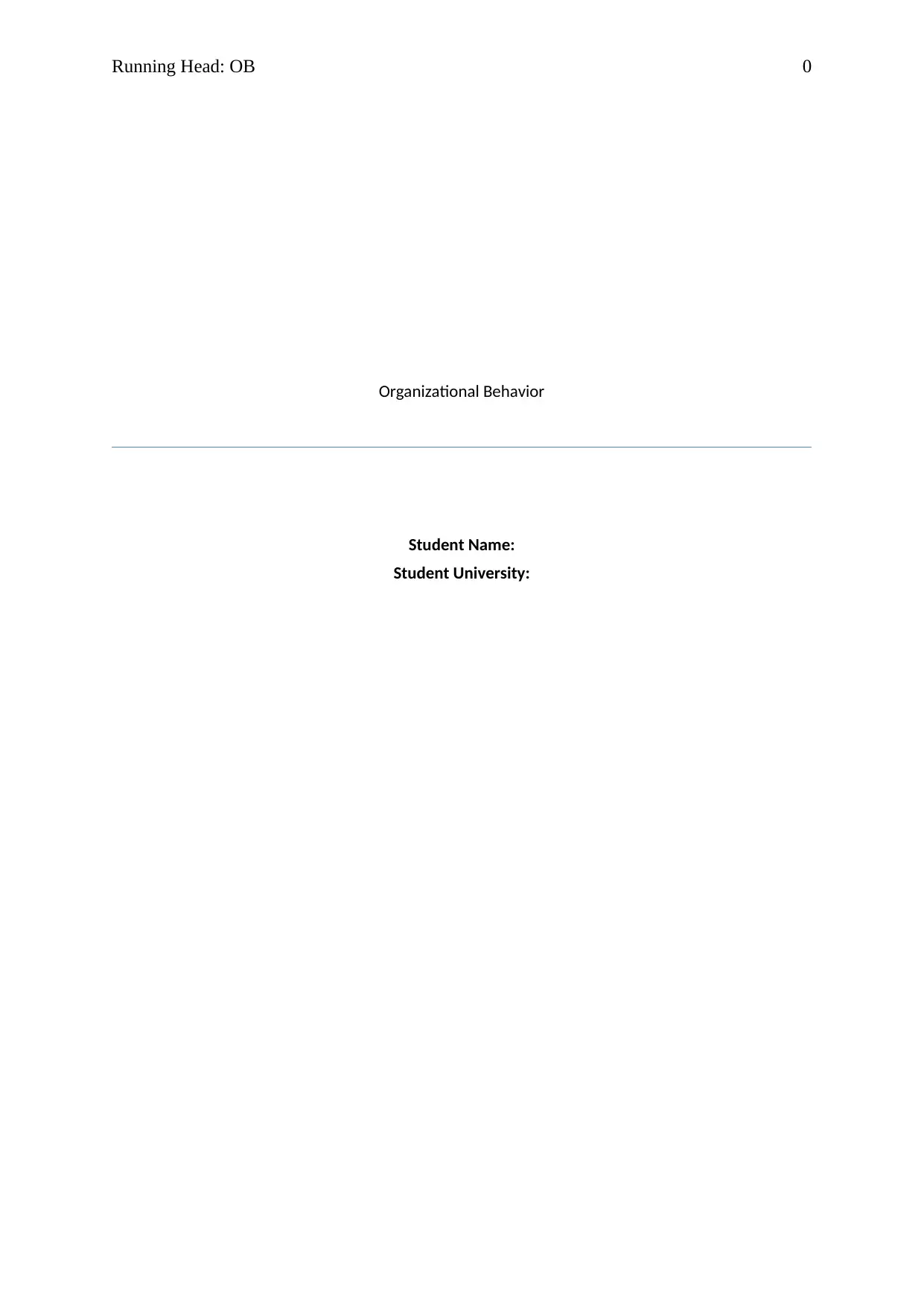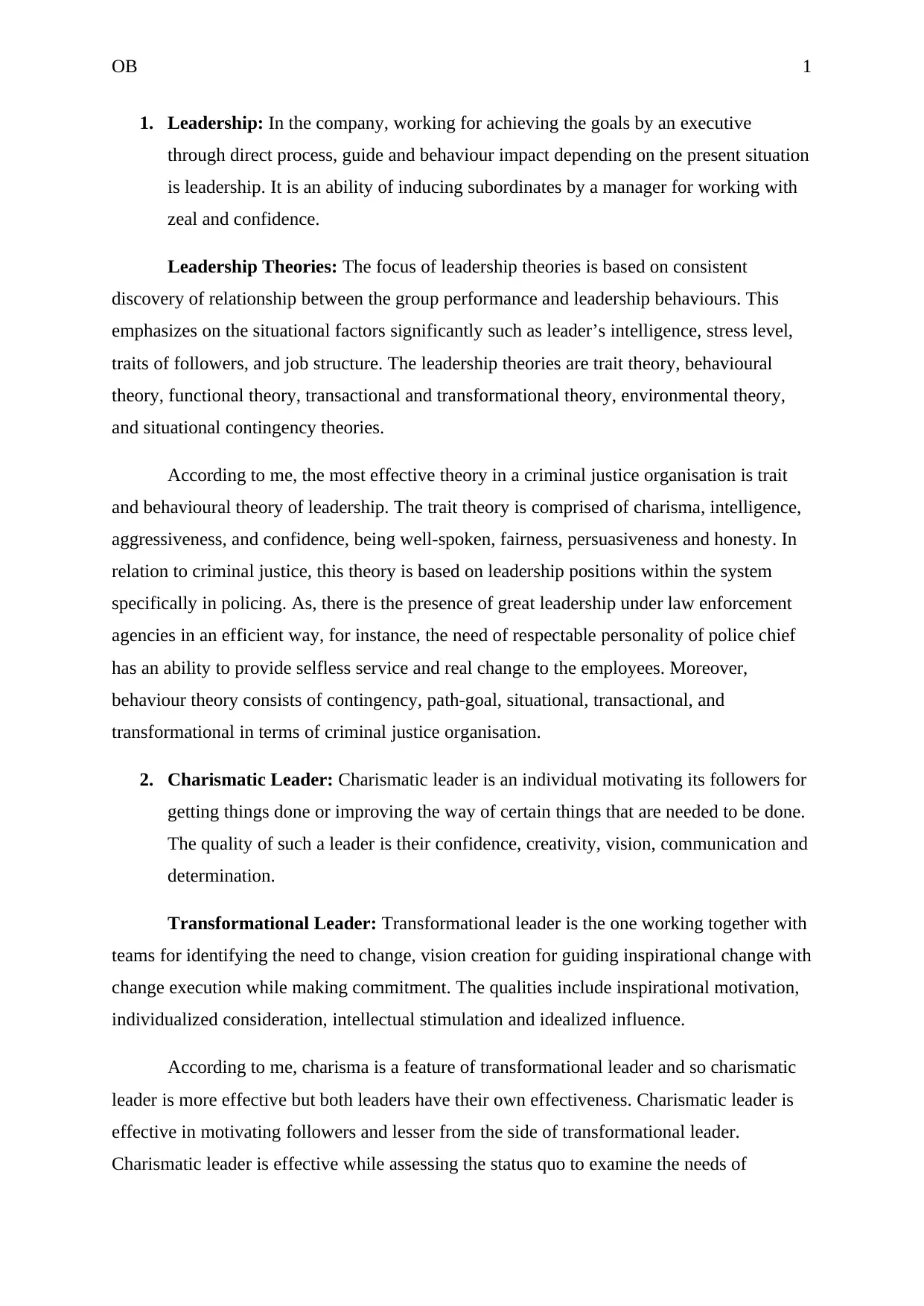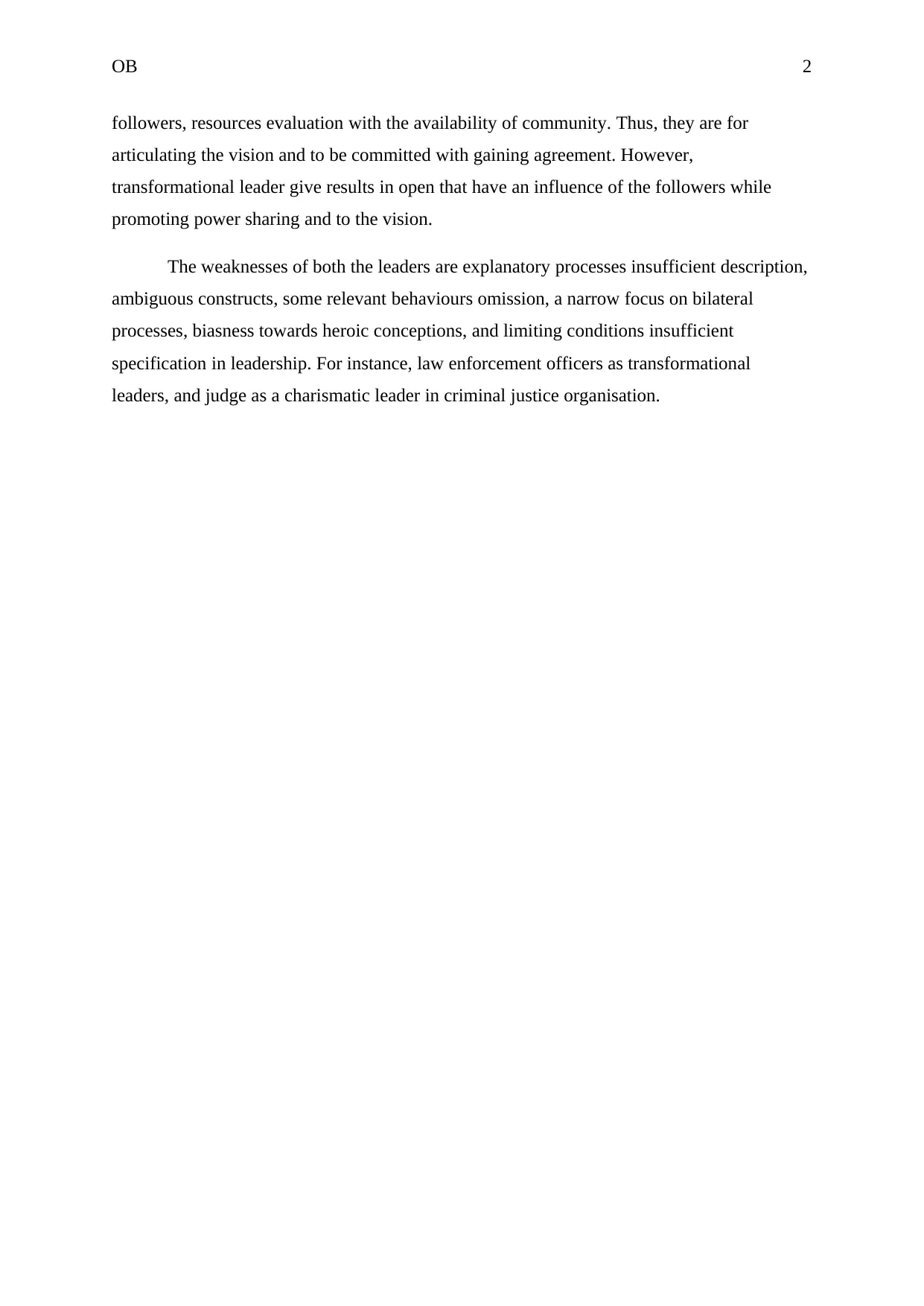Leadership Theories and Charismatic Leaders in Criminal Justice
VerifiedAdded on 2022/08/26
|3
|528
|21
Report
AI Summary
This report delves into leadership theories and their application within criminal justice organizations. It begins by defining leadership and highlighting key leadership theories, including trait, behavioral, functional, transactional, transformational, environmental, and situational contingency theories. The report emphasizes the importance of leadership in law enforcement, particularly the role of a police chief. It then examines charismatic and transformational leadership styles, comparing their effectiveness, strengths, and weaknesses. The report also provides examples of how these leadership styles manifest within the criminal justice system, such as a judge as a charismatic leader and law enforcement officers as transformational leaders. Overall, the report underscores the significance of effective leadership in achieving organizational goals and influencing the behavior of subordinates within the context of criminal justice.
1 out of 3









![[object Object]](/_next/static/media/star-bottom.7253800d.svg)